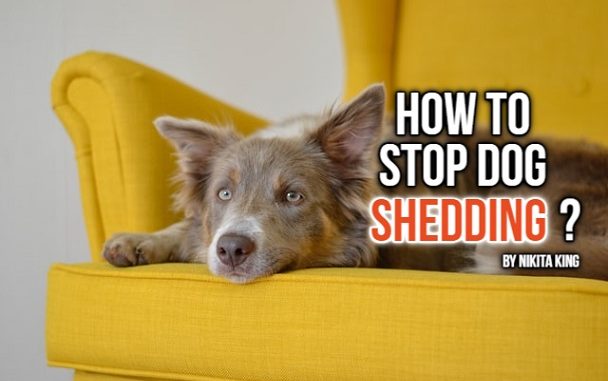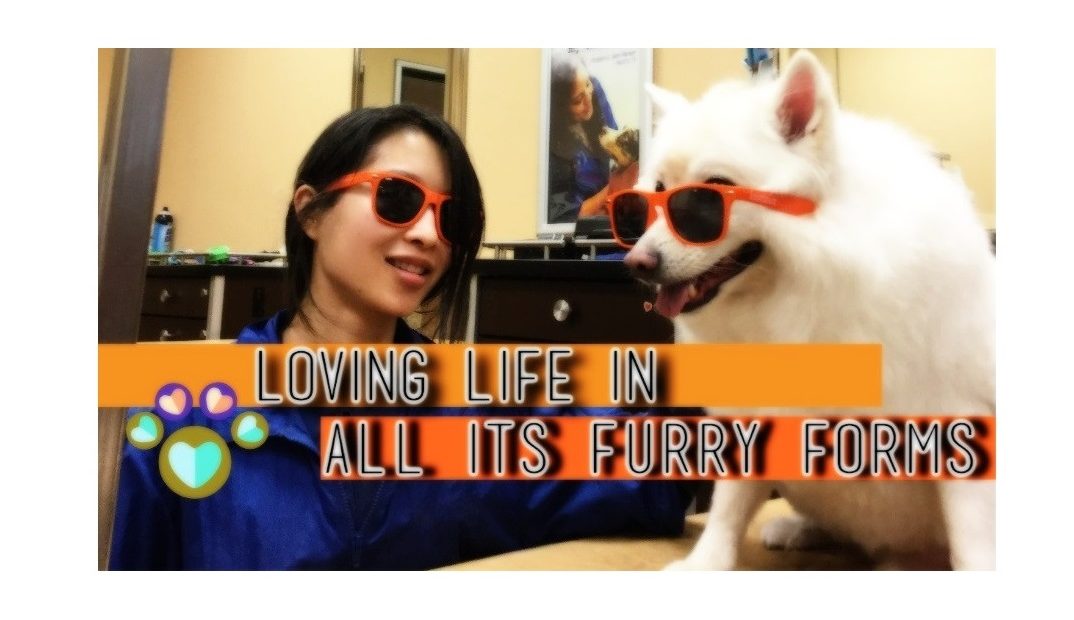
Some dogs shed enough hair to fill a mountain of pillowcases. Hair is often found decorated all over the couch, car seats, floor and clothing. The most common dogs that shed include the Husky, German Shepherd, Border Collie, Labrador Retriever, Beagle, Golden Retrievers even some Goldendoodles. Every Fall and Spring, these shedding dogs naturally lose clumps of hair and it’s often a challenge to manage. It’s key to remember that you can’t stop dog shedding – only reduce it. However, there are helpful ways to reduce the amount of dog hair in the house. A groomer shares her top deshedding tools to help answer the most common question: how to stop dog shedding?
Unless you own a hypoallergenic dog, you can’t stop a dog from shedding – only reduce it. Here are a groomer’s choice of best tools to try out:
1. Undercoat Rake
The undercoat rake has a row of hooks on one end. This effectively reaches below the surface of coat and rakes out matted or loose hair.
PRO TIP: As an added bonus, the undercoat rake can be used on wet and dry hair.
Without damaging the surface of the coat, this tool grabs onto the fuzzy dead hairs underneath. The best way to use this undercoat rake is before and during a bath. To use the rake, pull the rake in the direction of the hair growth.
PRO TIP: It’s always best to test the undercoat rake against your wrist. This will help provide an idea of how much pressure to apply when using the undercoat rake on a dog. Too much pressure applied to the tool can injure the skin.
The tool must also be used with care when applied over sensitive areas of the dog. For example, the armpits, flank, neck and hock area are vulnerable to lacerations.
Appropriate for:
Long hair shedding dogs such as Huskies, German Shepherds, Samoyeds, Australian Shepherds, American Eskimos, Border Collies and Shelties.
Pros:
- Reasonably priced with price ranges generally between $10-$20
- Can damage the top coat if used with extensive force
- Can be used on dry or wet hair
Cons:
- Not appropriate for shedding dogs with short hair.
2. Furminator brush
This brush has a metal end with tiny razor-like teeth. Though they advertise that it does not damage the topcoat –this isn’t the case if not appropriately used.
From my 5 year experience using this tool on shedding dogs, I have a few clients who are against it. I have noticed that extensive use can rip out sections of top coat leaving bald spots. However, in my experience this is mostly if someone is brushing too hard or brushing for hours. Otherwise, in my experience, the design of this brush allows the tiny metal teeth to reach deep into coat and extract clumps of shedding hair with ease.
Appropriate for:
Long or short haired shedding dogs.
Cons:
- Expensive – brushes can range from $40-$60
- Extensive or forceful use can damage the coat.
- Extensive or forceful use can irritate the skin and cause brush burn. For example, brush the metal end against your wrist to test the abrasive effects as you apply more and more force.
- Not appropriate for puppies because it can damage their coats.
Pros:
- Specially designed for effective mass hair removal.
- Removes more shedding hair in a shorter amount of time than most deshedding brushes.
- Used by many professional groomers. You can also book a Furminator brush out with your groomer to test the deshedding effectiveness before making a purchase.
3. Rubber Curry brush:
This is a hand sized rubber tool with thick rubber teeth. It doubles as a massager and deshedding tool. Most dogs enjoy the massaging sensation of this brush.
PRO TIP: As a test, you can rub it against your skin to get a feel of its stimulating effects. The massaging effect helps maintain a healthy coat as it stimulates hair follicles and distributes natural oils for a smooth, shiny coat.
This brush is best used with circular motions against the coat. As a result, this helps loosen and collect hair between its rubber teeth.
The Kong brand is my personal top pick – it’s durable and is more effective with flexible rubber teeth.
Appropriate for:
Short haired shedding dogs such as Dachshunds, Boxers, Mastiffs, American Pit bulls, English Bulldogs, French Bulldogs, short haired Chihuahuas, Labrador Retrievers and Great Danes.
Pros:
- Can be used on wet or dry hair.
- Does not damage the coat or skin
Cons:
- Not effective for long haired shedding dogs.
Fulminator deshedding Ultra Premium Conditioner:
Yes, there is a shampoo that helps reduce shedding!
PRO TIP: Though both the Furminator shampoo and conditioner is marketed for shedding dogs, most groomers find the conditioner is really all you need.
Rich with Omega 6 and 3 fatty acids, Aloe Vera and Chamomile extract, this soothing conditioner helps release shedding hair during the bath.
In my experience as a groomer, the conditioner does not remove all shedding hair. It certainly doesn’t stop dog shedding but it reduces the shedding hair by about 70%-80% after one use.
If used on a monthly basis, it reduces shedding hair even more. Many groomers even offer Furminator grooms that include a Furminator bath and brush out with the Furminator tool.
However, should you wish to use the Furminator at home, there are some tips to be aware of.
PRO TIP: For best results, brush your dog out before the bath. This will break up any dirt, mats and thick tangles that can block the conditioner from entering the deeper layers of the coat.
Once the dog is in the tub, use regular dog shampoo to wash out any dirt before applying the Furminator conditioner. After the dog is washed, condition the dog’s coat and massage well. Then allow the conditioner to sit in the coat for 5 minutes before rinsing thoroughly.
Appropriate for:
All shedding dogs with long or short hair – including Boxers, French Bulldogs, Labrador Retrievers and English Bulldogs.
Pros:
- Softens the coat and specially formulated to release shedding hair.
- With regular use, it helps reduce the amount of shedding hair.
- Does not dry the coat out.
- Many groomers offer Furminator grooms – if you prefer to test it out first before purchase.
- Contains no chemical dyes or parabens
Cons:
- Not recommended for dogs with skin allergies
– BY Nikita King, Certified Professional Groomer
For more tips on home grooming, check out these helpful articles written by a professional groomer:
Home grooming: 8 tips
How to cut a dog’s nails: A step by step guide
How often should I cut my dog’s nails?
– By Nikita King, Certified Professional Pet Groomer
